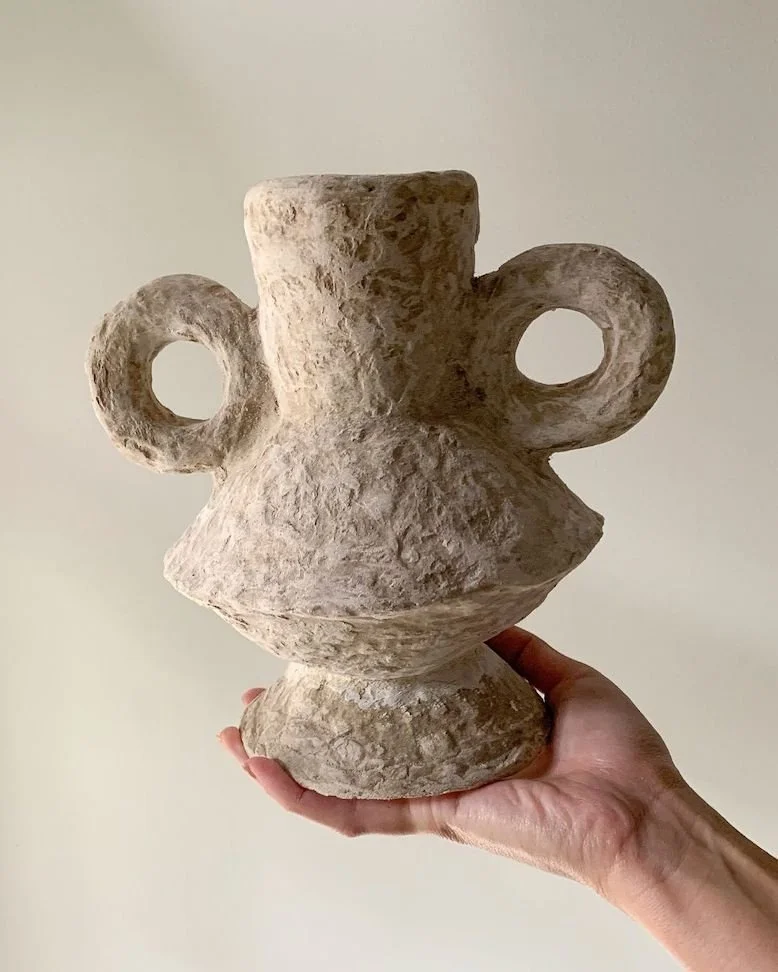As an artist, I believe that creativity and responsibility go hand in hand. The materials I use are not just tools for expression but also a reflection of my commitment to the environment. I strive to make conscious choices by selecting sustainable, eco-friendly materials and practices that minimize waste and reduce harm to the planet.
Art has the power to inspire change, and by prioritizing sustainability in my practice, I hope to contribute to a more mindful and environmentally responsible creative community.
Handmade / Small Scale / Local
Creating my art by hand rather than mass-producing it ensures that each piece is unique, thoughtfully made, and aligned with sustainable practices. Slow production allows me to focus on quality over quantity, reducing waste and avoiding the environmental harm caused by large-scale manufacturing. By making each artwork individually, I embrace a more mindful, intentional process that values craftsmanship, creativity, and sustainability over fast, disposable production. This approach not only preserves the uniqueness of my work but also supports a more ethical and environmentally conscious way of creating.
I strive to make my art as sustainable and environmentally friendly as possible by carefully selecting materials that are locally sourced or reused. I incorporate recycled paper pulp, vintage clothing items, and Australian-made paints to minimise waste and support local industries.
By repurposing and choosing sustainable options, I aim to reduce my environmental impact while creating unique, thoughtful pieces that reflect my commitment to conscious creativity.
Materials
RECYCLED PAPER
Every vase featured on my website is made from paper pulp derived from locally sourced paper grocery bags. The bags are comprised of at least 70% recycled paper. This paper is responsibly sourced and certified by FSC (Forest Stewardship Council) or PEFC (Programme for the Endorsement of Forest Certification), so we know that the forests the paper is sourced from has been independently certified.
The padded mailer bags I use to send out clothing pieces are made from FSC-certified recycled wood pulp and are both compostable and kerbside recyclable. They are made with up to 100% post-consumer recycled paper. The inner padding is made from recycled paper padded honeycomb, not plastic.
ORGANIC COTTON
For the clothing I paint onto, I always choose organic cotton over conventional cotton. There are many benefits from using organic cotton - it means the fibre was farmed without synthetic fertilisers and utilises rainfall or more efficient irrigation practices. Conventional cotton uses 16% of the world’s pesticides and 6% of the world insecticides, making it a very harmful fibre. For this reason, I always do my best to stay away from using conventional cotton.
RECYCLED SYNTHETICS
I use recycled polyester and nylon for the clothing labels. Although recycled synthetics are not perfect, it is a good first step away from our dependence on petrol-based chemicals and means that new plastics are not being made for my labels.
Hand-painting vs Screen Printing
Hand-painting vs Screen Printing
Hand-painting is a more sustainable and environmentally friendly alternative to screen printing. Unlike screen printing, which often relies on harsh chemicals and excessive water usage, hand-painting allows for a more mindful and low-impact approach. By eliminating the need for mass production processes, hand-painted designs reduce waste and pollution while ensuring each piece remains unique and artisanal. Choosing hand-painted clothing is not just a creative decision—it’s a commitment to sustainability and conscious craftsmanship.




